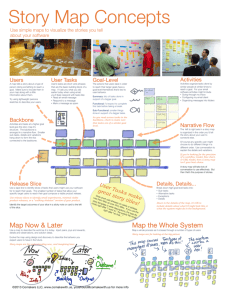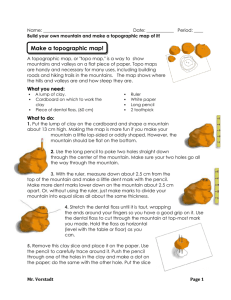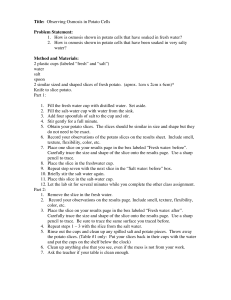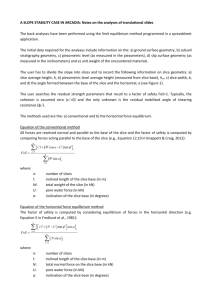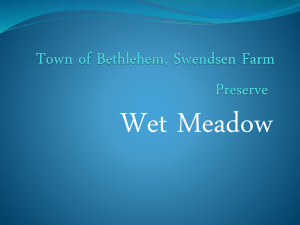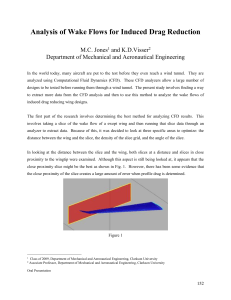Columbia University College of Dental Medicine STEP Grade 9
advertisement
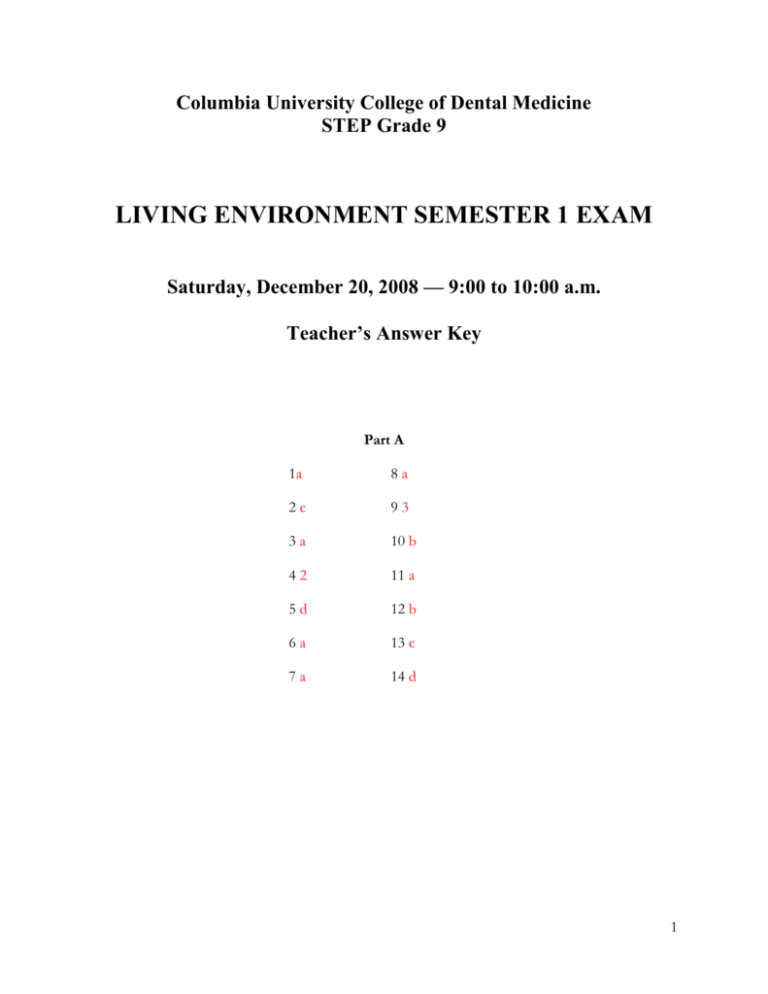
Columbia University College of Dental Medicine STEP Grade 9 LIVING ENVIRONMENT SEMESTER 1 EXAM Saturday, December 20, 2008 — 9:00 to 10:00 a.m. Teacher’s Answer Key Part A 1a 8a 2c 93 3a 10 b 42 11 a 5d 12 b 6a 13 c 7a 14 d 1 Part B Data from two different cells are shown in the graphs below. 1. Which cell is most likely a plant cell? Support your answer. [1] Allow 1 credit. Acceptable responses include, but are not limited to: — Cell 1, because it contains chloroplasts. — Cell 1, because it has a cell wall. Base your answers to questions 2 through 6 on the information below and on your knowledge of biology. The average level of carbon dioxide in the atmosphere has been measured for the past several decades. The data collected are shown in the table below. Directions (2 and 3): Using the information in the data table, construct a line graph on the grid on the next page, following the directions below. 2. Mark an appropriate scale on each labeled axis. [1] Allow 1 credit for marking an appropriate scale on each axis. 3. Plot the data on the grid. Surround each point with a small circle and connect the points. [1] 2 Allow 1 credit for plotting the data correctly (based on the student’s scaled axes), surrounding each point with a small circle, and connecting the points. Note: Allow credit even if the points are not circled. Example of a 2-credit graph for questions 51 and 52: 4. Identify one specific human activity that could be responsible for the change in carbon dioxide levels from 1960 to 2000. [1] Allow 1 credit. Acceptable responses include, but are not limited to: — increased burning of fossil fuels — more motor vehicle use — increased levels of deforestation — increase in human population 5. State one possible negative effect this change in CO2 level has had on the environment of Earth. [1] Allow 1 credit. Acceptable responses include, but are not limited to: — an increase in the number of severe storms — an increase in sea levels — flooding of coastal areas — changes in precipitation patterns — global warming — temperature increases 6. Calculate the net change in CO2 level in parts per million (ppm) during the years 1960 through 2000. [1] ____________ ppm Allow 1 credit for 50. 3 Base your answers to questions 7 and 8 on the diagram below that shows some interactions between several organisms located in a meadow environment and on your knowledge of biology. 7. A rapid decrease in the frog population results in a change in the hawk population. State how the hawk population may change. Support your answer. [1] Allow 1 credit. Acceptable responses include, but are not limited to: — The hawk population will decrease because there will be fewer snakes since there are fewer frogs for them to eat. — The hawk population will increase because there will be more grasshoppers for the shrews to eat and more shrews for the hawks to eat. 8. Identify one cell structure found in a producer in this meadow ecosystem that is not found in the carnivores. [1] ___________________________________ Allow 1 credit. Acceptable responses include, but are not limited to: — chloroplast — cell wall Base your answers to questions 9 and 10 on the information and food web below and on your knowledge of biology. The organisms in the food web below live near large cattle ranches. Over many years, mountain lions occasionally killed a few cattle. One year, a few ranchers hunted and killed many mountain lions to prevent future loss of their cattle. Later, ranchers noticed that animals from this food web were eating large amounts of grain from their fields. 4 9. Identify two specific populations that most likely increased in number after the mountain lion population decreased. Support your answer. [2] Allow 1 credit for rabbit and deer, and 1 credit for supporting the responses. Acceptable responses include, but are not limited to: — rabbit and deer – They have fewer predators. 10. Explain how killing many mountain lions affected other ranchers in the community. [1] Allow 1 credit. Acceptable responses include, but are not limited to: — Their grain crops decreased Base your answers to questions 11 and 12 on the information and data table below and on your knowledge of biology. A student cut three identical slices from a potato. She determined the mass of each slice. She then placed them in labeled beakers and added a different solution to each beaker. After 30 minutes, she removed each potato slice from its solution, removed the excess liquid with a paper towel, and determined the mass of each slice. The change in mass was calculated and the results are shown in the data table below. 11. Identify the process that is responsible for the change in mass of each of the three slices. [1] Allow 1 credit. Acceptable responses include, but are not limited to: — diffusion — osmosis — passive transport 5 12. Explain why the potato slice in beaker 1 increased in mass. [1] Allow 1 credit. Acceptable responses include, but are not limited to: — Water diffused into the cells of the potato because there was a higher concentration of water outside than inside the slice. — The potato slice increased in water content. 6
